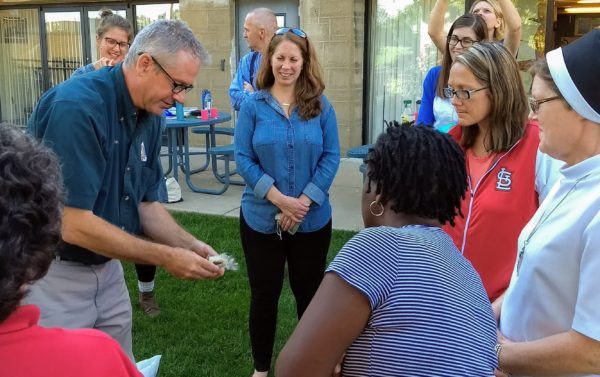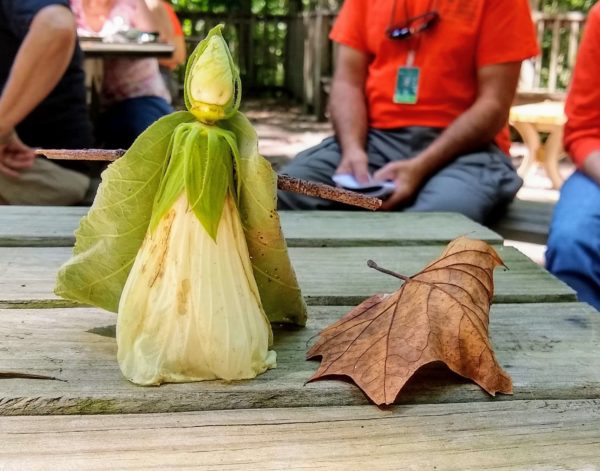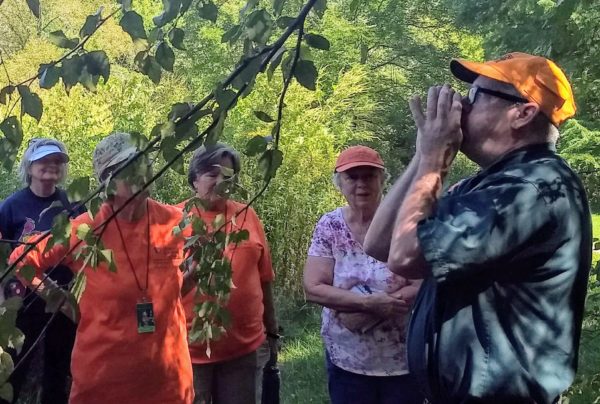
As presented at the 14th Annual National Children & Youth Garden Symposium, July, 2006, by David Bruns, Conservation Education Consultant, Missouri Department of Conservation
The original paper can be viewed at this link.
Plants in cultivated settings can be used as tools to instill positive feelings and attitudes of caring about nature in children while minimizing the development of unreasoned fears and misconceptions.
What are the best plants to include in an educational landscape for this purpose? How would the ubiquitous schoolyard tulips and boxwood compare to native species? Or dandelions for that matter?
It is proposed that plants which are common to the geographical region of the children; which can be used to engage the students in first-hand and tactile experiences; and which stimulate the interest and imagination of the children are plant attributes desirable for the purpose of connecting children with the environment. These attributes are incorporated as criteria within the scoring guide included below. While this may serve as a tool to assess and compare plant species, it is included here to provoke critical thinking about the relative values of plants considered for cultivated settings to be used specifically for environmental education. It serves to reveal that some common and even “weedy” plants might be considered as important additions to educational landscaping compared to more traditional selections.
The first attribute is “Commonness to Wild.” This refers to the likelihood that the child will see the plant in local, natural, wild or semi-wild settings. It is important to note that what is “wild and natural” is relative to the experience and perception of the child. It does not necessarily denote a pristine natural landscape. A “wild” area from the perspective of a child may be an undeveloped woodlot near their house.

The next attribute of significance is “Interactivity.” What first-hand experiences can the child have with the plant? Can it be handled? Does it have an interesting texture or smell? Does it “do something?” Can it be used like a toy to play with or can something be made out of it?
“Ecological Interest” has to do with any intriguing adaptations a plant might possess as well as interactions with other organisms which may be readily observed. Milkweed is a good example of these qualities. So named for the sticky, milky latex which exudes from a broken leaf, this sap of the milkweed plant is toxic to many animals. Monarch butterfly larvae are capable of consuming the plant which causes them to become toxic to birds. Other special adaptations to pollination and seed dispersal of this plant can also be fascinating to children.
“Cultural Interest” relates to the history of human interaction with the plant. A plant’s history may include its use as medicine by American Indians or pioneers. Modern values and uses are also considered. Folklore may include myth, magic and superstition regarding the plant.
Another plant quality important to consider is “Hardiness.” Usually this term refers to the plant’s ability to withstand cold conditions. Here it refers not only to the plants ability to flourish in a cultivated setting, but also its ability to withstand children’s use –poking, prodding, picking, trampling, etc., in relation to the “Interactivity” qualities discussed above. It is difficult for children to have meaningful experiences with delicate and excessively guarded plantings.
The final attribute included in the scoring guide is “Aesthetic Appeal.” This quality is self explanatory and, while it is often the only quality used to select plants for many educational gardens, it may not be as important for the purpose of connecting children with their environment as the other criteria addressed above. This is reflected in the reduced weighted value in the scoring guide below. However, since children do demonstrate an attraction to large and brilliantly colored flowers, it is included here.
Other qualities for determining the suitability of specific plants for the purpose of connecting children with their environments, such as blooming periods, may also need to be taken into consideration depending on specific intended uses of the garden. For example, a schoolyard butterfly garden made up of species blooming in June, July and August is of reduced benefit to students who only view it from September through May.
